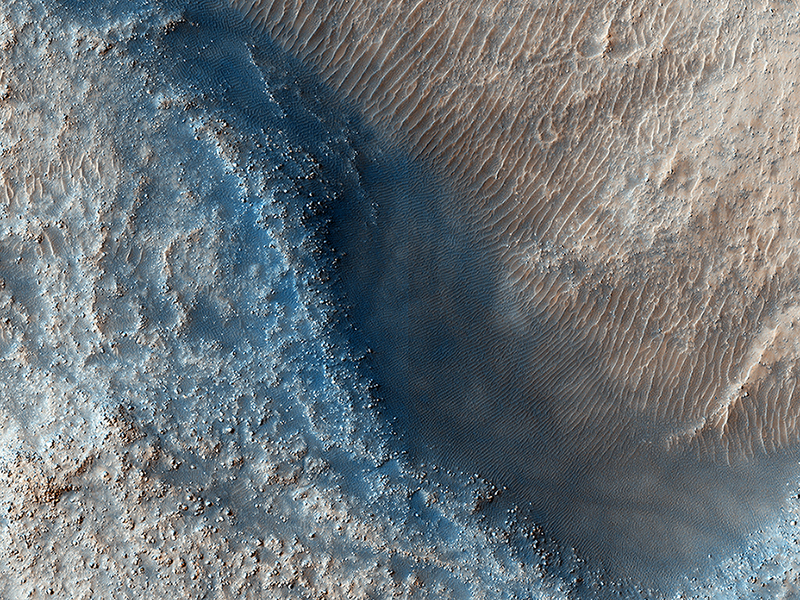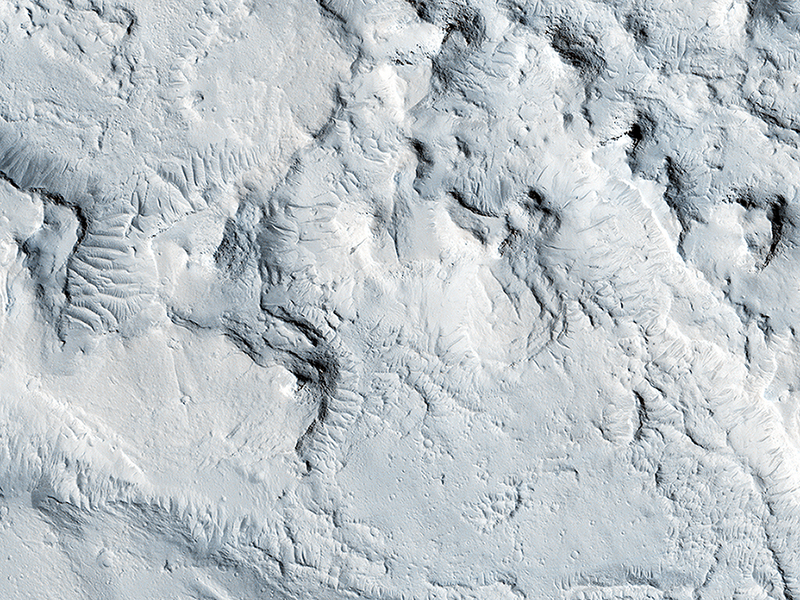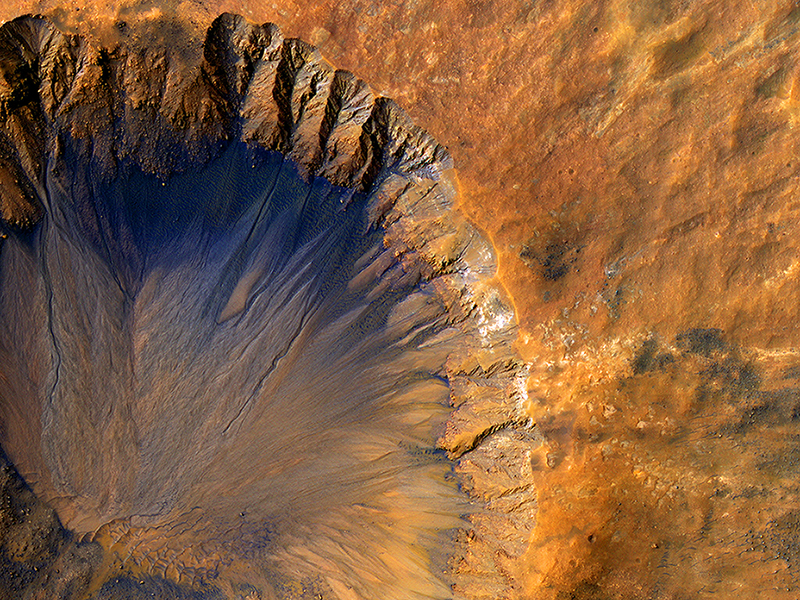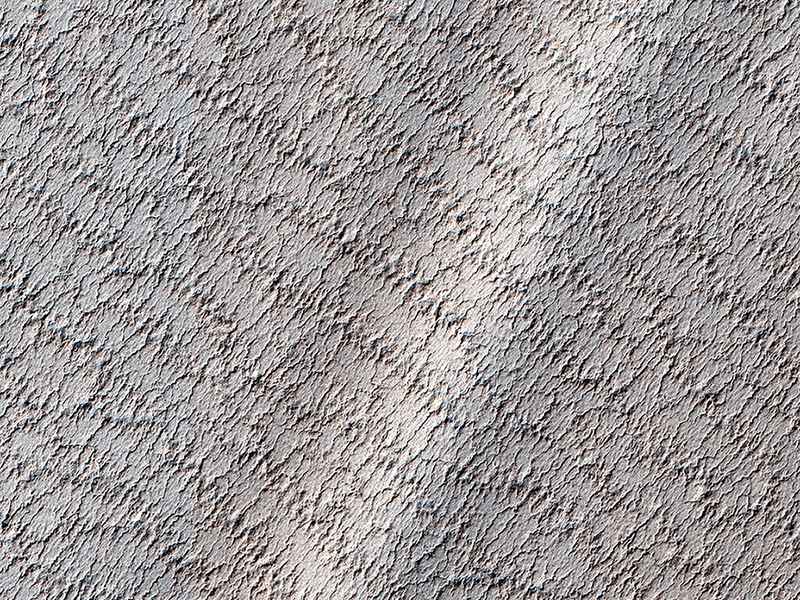HiRISE Science Team wrote:Fill or Mantling Material in a Crater (ESP_039925_1360) (HiClip)
This observation targets some unknown fill or mantling material within valleys on a crater floor and within a central pit.
High resolution imagery can help determine what this material may be (e.g., ice-rich fill, dust, or other mantling unit?) and estimates of its thickness. With knowledge of its thickness, we can discern how deep the valleys and pit would be without its presence. This is necessary information, because without knowing the thickness of the material, appropriate discharge values for the valleys cannot be determined and neither can the history of the crater prior to infill.
Alfred McEwen wrote:Gigas Sulci (ESP_040661_1890) (HiClip)
A sulcus (or sulci, plural) is defined as “subparallel furrows and ridges.” This is a purely descriptive term for landforms that could have a variety of origins.
At this location is appears to be a graben (which is a fault-bounded valley) on a large scale, and locally (such as in this image) became a vent region for lava flows.
Alfred McEwen wrote:A Fresh Crater near Sirenum Fossae (ESP_040663_1415) (HiClip)
This impact crater appears relatively recent as it has a sharp rim and well-preserved ejecta.
The steep inner slopes are carved by gullies and include possible recurring slope lineae on the equator-facing slopes. Fresh craters often have steep, active slopes, so we are monitoring this crater for changes over time.
The bedrock lithology is also diverse. The crater is a little more than 1-kilometer wide.
Note: When we say “fresh,” we mean on a geological scale. The crater is quite old on a human scale.
Alfred McEwen wrote:A Mysterious Bright Streak on the South Polar Layered Deposits (ESP_040667_0910) (HiClip)
This locale was targeted to a bright, bow-shaped marking visible in a summertime image from MRO’s Context Camera. Our HiRISE image reveals a crater near the streak, perhaps from an impact event, although now too degraded to be certain of its origin.
This image also shows a lacy network of many fine channels associated with jets in the subliming carbon dioxide of the springtime. The bright streak might be due to topographic shading, although an anaglyph will help us determine that for certain. If it is topographic, then this portion of the layered deposits may have been folded under compressional stresses, perhaps from gravitational slumping.
This is a stereo pair with ESP_032226_0910.
Credit: NASA/JPL/University of Arizona
<< Previous HiRISE Update



